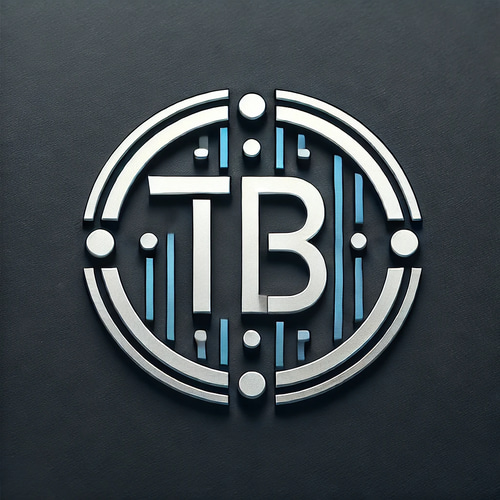Crypto 101: What is Cryptocurrency & How Does Blockchain Work?
Learn the fundamentals of cryptocurrency and blockchain in this beginner-friendly guide. Discover how digital assets work, why blockchain is important, and what sets crypto apart from traditional money.
Trailblazer
3/13/20253 min read


Why Understanding Crypto Basics Matters
Cryptocurrency, or Crypto, is one of our time's most talked-about financial innovations, yet it isn't very clear to many. Terms like blockchain, decentralization, and mining can sound intimidating, making it difficult for beginners to understand how crypto works.
In this post, we'll break down the fundamentals of cryptocurrency and blockchain in simple terms, setting the foundation for future deep dives into specific topics. By the end, you'll understand crypto, how blockchain works, and why it matters.
What Exactly is Cryptocurrency?
At its core, cryptocurrency is digital currency secured by cryptography, making it nearly impossible to counterfeit or manipulate. Cryptocurrency operates on decentralized networks using blockchain technology. Unlike traditional fiat currency, government-issued currency, such as the US dollar or euro, is not backed by a physical commodity. The US dollar was previously backed by gold. In 1971, President Richard Nixon announced that the US would no longer convert dollars to gold, altogether abandoning the gold standard.
Key Features of Cryptocurrency:
Decentralized (Mostly): Many cryptocurrencies operate without a central authority, but organizations or companies control some.
Borderless - Can be sent and received anywhere in the world.
Transparent - Transactions are recorded on a public ledger.
Secure - Uses cryptographic methods to ensure authenticity.
Examples of Popular Cryptocurrencies:
Bitcoin (BTC) - The first and most well-known cryptocurrency, often called "digital gold."
Ethereum (ETH) - A blockchain platform that enables smart contracts and decentralized applications (dApps).
Stablecoins - Cryptos pegged to fiat currencies (e.g., USDT, USDC) to reduce volatility.
Blockchain: The Technology Behind Crypto
Blockchain is the underlying technology that powers cryptocurrencies. Think of it as a digital ledger that records all transactions securely and transparently. Unlike traditional databases, blockchain can be decentralized or centralized, depending on its design. Decentralized blockchains, like Bitcoin and Ethereum, distribute control across a network of nodes. In contrast, in a centralized blockchain, one or more organizations or entities control the blockchain.
Moving forward, we will primarily discuss decentralized blockchains, the foundation of most cryptocurrencies. However, we will explore decentralized and centralized blockchains in future posts, comparing their differences, advantages, and use cases.
How Blockchain Works:
Transactions Occur - Someone sends cryptocurrency to another person.
Verification - A decentralized network of computers (nodes) verifies transactions.
Creation of Blocks - Verified transactions get grouped into blocks.
Blocks Are Linked - Each new block is connected to the previous one, forming a chain (hence, blockchain).
Immutable Ledger - Once recorded, transactions cannot be altered or deleted.
Key Benefits of Blockchain:
Security - Transactions are encrypted and recorded permanently.
Transparency - Public blockchains allow anyone to verify transactions.
Trustless System - No need to rely on a third party (like a bank) for transaction approval.
Crypto vs. Traditional (Fiat) Currency
How does crypto compare to traditional currency (fiat currency)? Here's a quick breakdown:
Cryptocurrency
Control - Decentralized (No single authority)
Supply - Limited (e.g., Bitcoin: 21Million max)
Speed - Fast (Minutes for international transactions)
Security - Blockchain encryption
Inflation - Low (Fixed supply for many cryptos)
Fiat Money (USD, EUR, etc.)
Control - Centralized (Governments, Banks)
Supply - Unlimited (Governments print more)
Speed - Slow (Days for cross-border payments)
Security - Vulnerable to inflation & fraud
Inflation - High (Currency printing causes inflation)
Pros and Cons of Crypto:
Pro - Decentralized and resistant to government control.
Pro - Faster and cheaper transactions across borders.
Con - High volatility; prices can fluctuate rapidly.
Con - Not universally accepted (yet!).
Future Posts
Now that we've covered the basics, future posts will dive deeper into:
The difference between a Central Bank Digital Currency (CBDC) and Crypto.
How to safely buy and store cryptocurrency.
Understanding different crypto wallets (hot vs. cold storage).
What determines crypto's price and market movements.
Navigate crypto exchanges and avoid related scams.
Understanding the basics of cryptocurrency is the first step to making informed investment decisions. Whether you're completely new or just looking for more straightforward explanations, a strong foundation will help you confidently navigate the crypto world.
💡 New to crypto? If you come across unfamiliar terms, check out the Crypto Terms & Definitions page for clear explanations of key concepts.
✨ Empowering you to navigate the digital economy with confidence. ✨
Be sure to bookmark this page and follow along as I explore crypto, markets, and investing strategies!
Join the Trailblazer Crypto Community
© 2025. All rights reserved.


